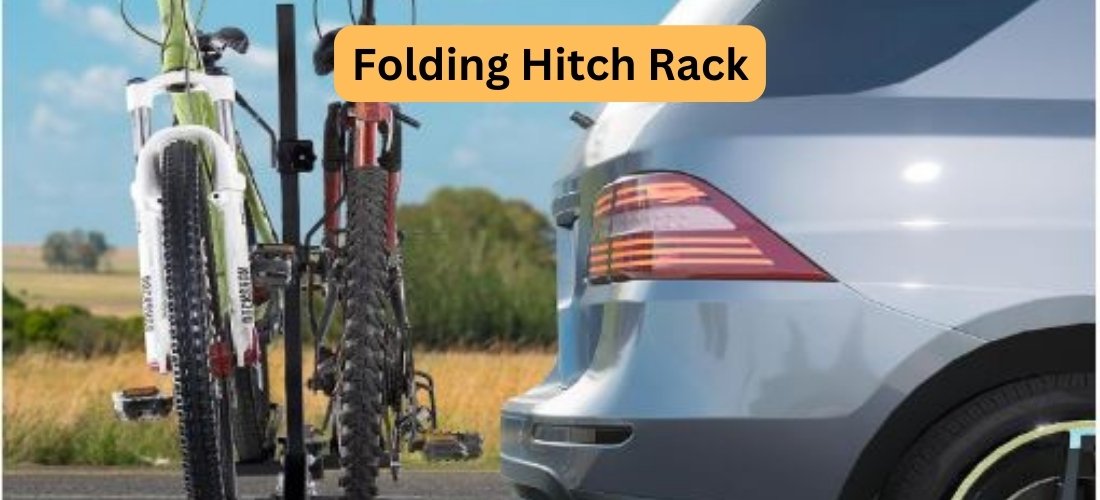Alright, folks! Buckle up because you’re about to embark on a journey into the world of hitch bike racks – not just any journey, but a DIY odyssey that will turn you into a hitch bike rack whisperer. Whether you’re planning to hit the trails, gearing up for a family biking adventure, or simply trying to figure out the best way to transport your two-wheeled treasure, you’ve come to the right place. This guide is packed with everything you need to know about hitch bike rack, from folding them down like a pro to keeping your bike as secure as Fort Knox. Let’s dive in and transform your hitch rack experience from ‘meh’ to ‘wow’!
Understanding the Basics
Before we get into the nitty-gritty, let’s make sure we’re all on the same page about what a hitch bike rack is. Simply put, it’s a type of bike rack that attaches to the hitch receiver of your vehicle, offering a sturdy, reliable way to transport your bikes. Now, let’s roll up our sleeves and get to the good stuff.
How to Fold a Hitch Bike Rack: A DIY Guide
Folding your hitch bike rack when it’s not in use is a fantastic way to save space and keep things tidy. Here’s how to do it:
- Check the Manufacturer’s Instructions: Each rack is a little different, so start by giving the manual a once-over.
- Unlock and Adjust: Most racks have a pin or a knob that you need to remove or adjust to allow the rack to fold.
- Fold Down the Arms: If your rack has arms that hold the bikes, fold these down first.
- Tilt or Fold the Rack: Depending on your rack’s design, you’ll either tilt it down or fold it up against the back of your vehicle. Make sure it locks into place.
Mounting Your Bike Like a Pro
Wondering how to get your bike on that hitch rack without looking like you’re wrestling an octopus? Here’s the play-by-play:
- Open the Arms: If your rack folds, make sure the arms are extended and locked in place.
- Lift Your Bike: Pick up your bike and place it onto the rack, ensuring the frame rests securely against the arms.
- Secure the Bike: Use the straps or locking mechanism provided with your rack to secure your bike. Make sure it’s snug and doesn’t wobble.
Locking Your Bike to the Hitch Rack: Keep It Safe
Keeping your bike secure is crucial, whether you’re stopping for a post-ride snack or overnighting on a road trip. Here’s how to lock your bike to the hitch rack securely:
- Use a Quality Bike Lock: A sturdy U-lock or a heavy-duty chain lock works best.
- Lock the Frame and Wheels: Loop the lock through the frame and at least one wheel, then secure it to the rack itself.
- Consider a Hitch Lock: Many racks come with or offer an optional hitch lock that secures the rack to your vehicle, adding an extra layer of security.
Stabilizing Your Hitch Bike Rack
Nobody likes a wobbly bike rack. Here’s how to ensure your hitch rack is as stable as can be:
- Check the Hitch Connection: Make sure the rack is properly inserted into the hitch receiver and secured with a hitch pin or lock.
- Use Anti-Wobble Devices: Some racks come with anti-wobble devices or bolts. If yours doesn’t, consider purchasing one that’s compatible with your rack.
- Tighten Everything: Before you hit the road, double-check that all bolts, knobs, and straps are tightened and secure.
Locking a Bike on a Hanging Rack
Hanging racks are great for saving space, but securing your bike on them requires a bit of know-how:
- Position Your Bike Correctly: Hang your bike by the frame, ensuring it’s balanced and secure.
- Use a Cable Lock: A long cable lock can be looped through the bike’s frame and wheels, then around the rack’s arms or the hitch post of your vehicle.
- Check Stability: Give your bike a gentle shake to ensure it’s securely fastened and won’t sway during transport.
Conclusion
There you have it – a comprehensive guide to mastering your folding hitch bike rack, with a sprinkle of humor and heaps of useful tips. Remember, transporting your bike should be as enjoyable as riding it. With this guide, you’ll not only keep your bike safe and secure but also turn heads with your hitch rack prowess. So go ahead, hit the road, and make every journey with your bike an adventure. Happy biking!
FAQs
1. Can I fold every hitch bike rack, or are there specific types that fold?
Not all hitch bike racks are designed to fold, but many do for convenience and space-saving purposes. Before attempting to fold yours, check the manufacturer’s instructions to ensure it’s designed with this feature. Folding mechanisms vary by model, involving either tilting down or folding up against the vehicle.
2. What’s the best way to secure my bike to a hitch rack to prevent theft?
The best method involves using a high-quality bike lock, such as a U-lock or a heavy-duty chain lock. Secure the bike by looping the lock through both the frame and at least one wheel, then attach it to the rack. For added security, consider using a hitch lock that secures the rack to your vehicle, making it difficult for thieves to remove the entire rack.
3. How do I ensure my hitch bike rack is stable and doesn’t wobble during transport?
First, ensure the rack is correctly inserted into the hitch receiver and secured with a hitch pin or lock. Many racks include anti-wobble devices or bolts; make sure these are installed and tightened. Lastly, double-check that all bolts, knobs, and straps on the rack are tightened before you hit the road.
4. Is it possible to lock a bike on a hanging hitch bike rack securely?
Yes, you can securely lock a bike on a hanging hitch bike rack by using a cable lock. Position your bike correctly on the rack and loop the cable lock through the bike’s frame and wheels, then around the rack’s arms or the hitching post of your vehicle. This method helps prevent the bike from being removed from the rack.
5. How do I correctly mount and secure my bike on the hitch rack?
To mount your bike on the hitch rack, extend and lock the rack’s arms in place, lift your bike, and place its frame against the arms. Use the straps or locking mechanism to secure the bike firmly in place. Ensure the bike doesn’t wobble and adjust the straps or mechanism as needed for a snug fit.
Holding an MSC-IT from the University of Gujrat, I boast two years in website development, certifications in SEO, and graphic design from e-Rozgar, and an Amazon course completion. As “Fashion Vogue’s” owner and a seasoned freelancer on Upwork for three years, my expertise spans IT, digital marketing, and e-commerce.

